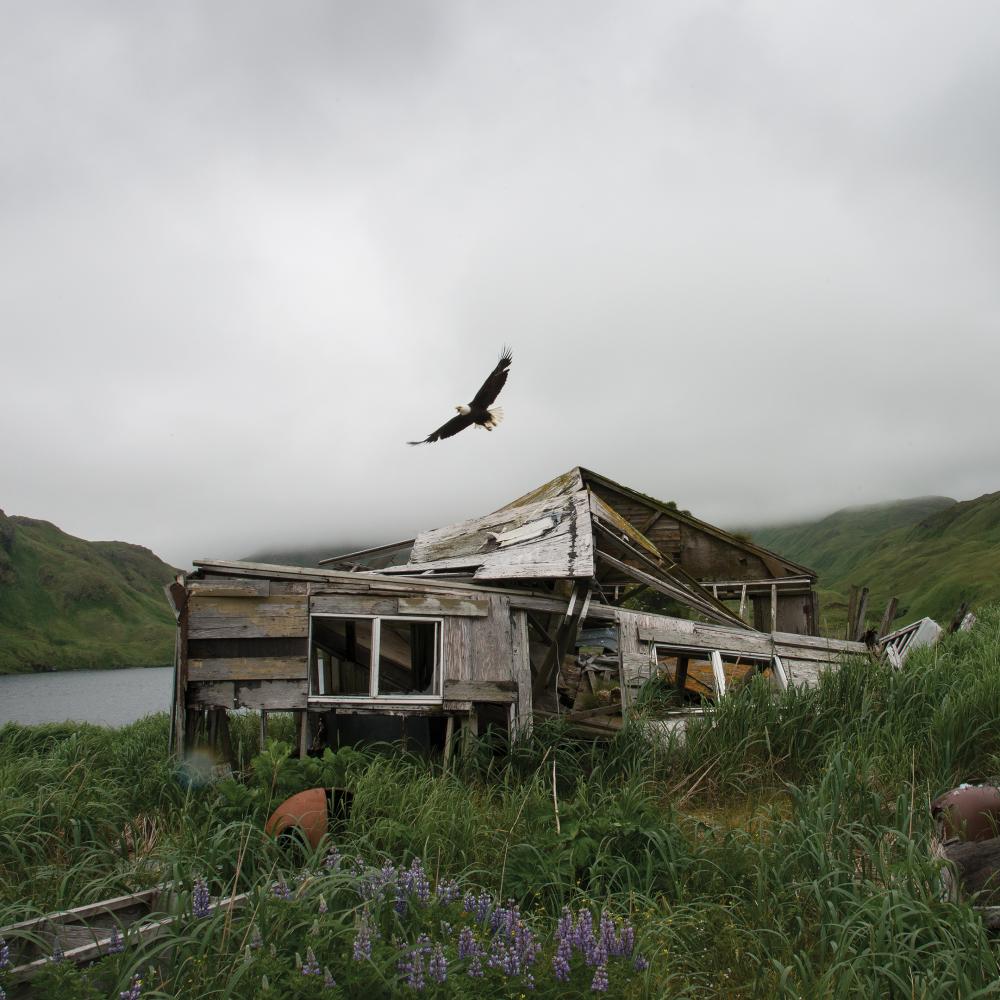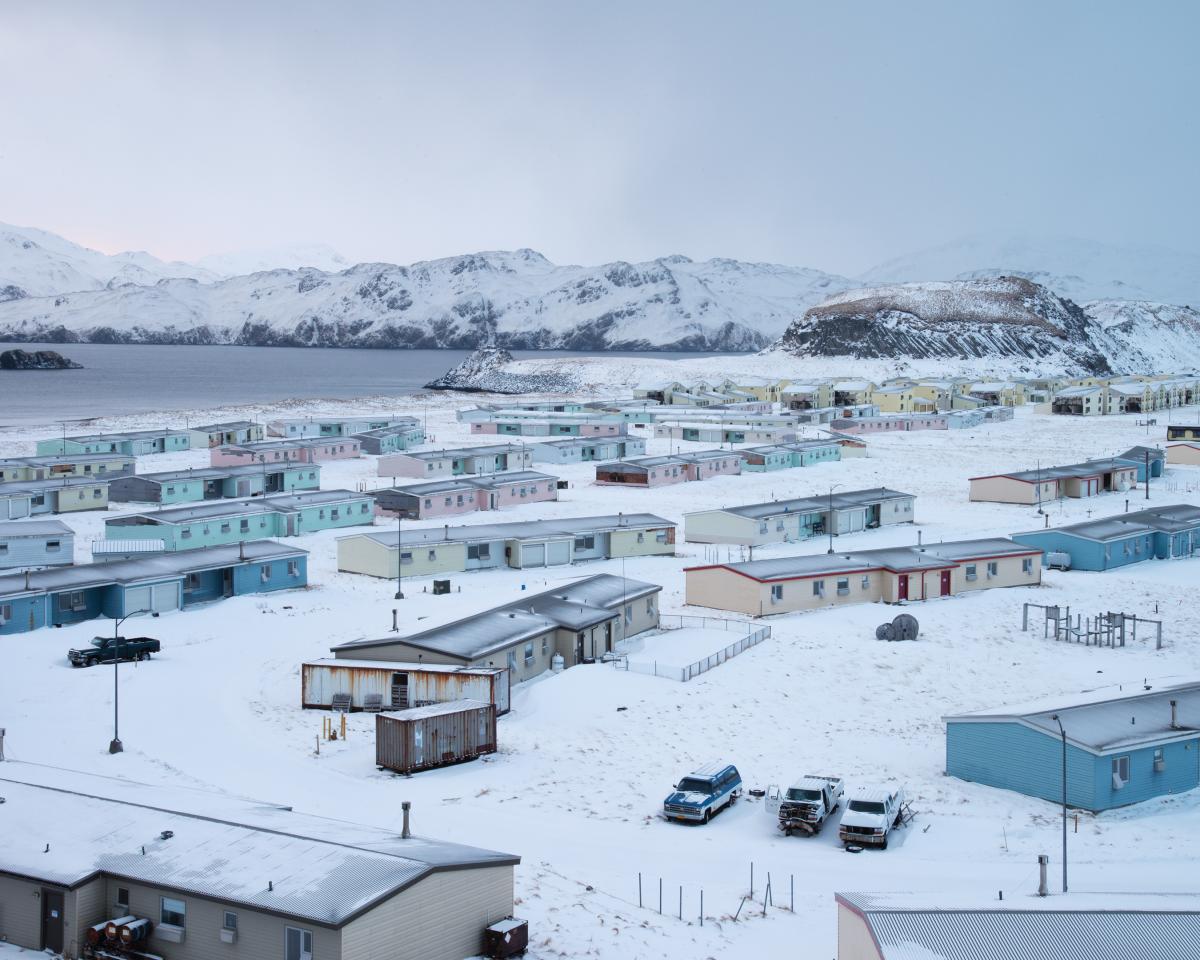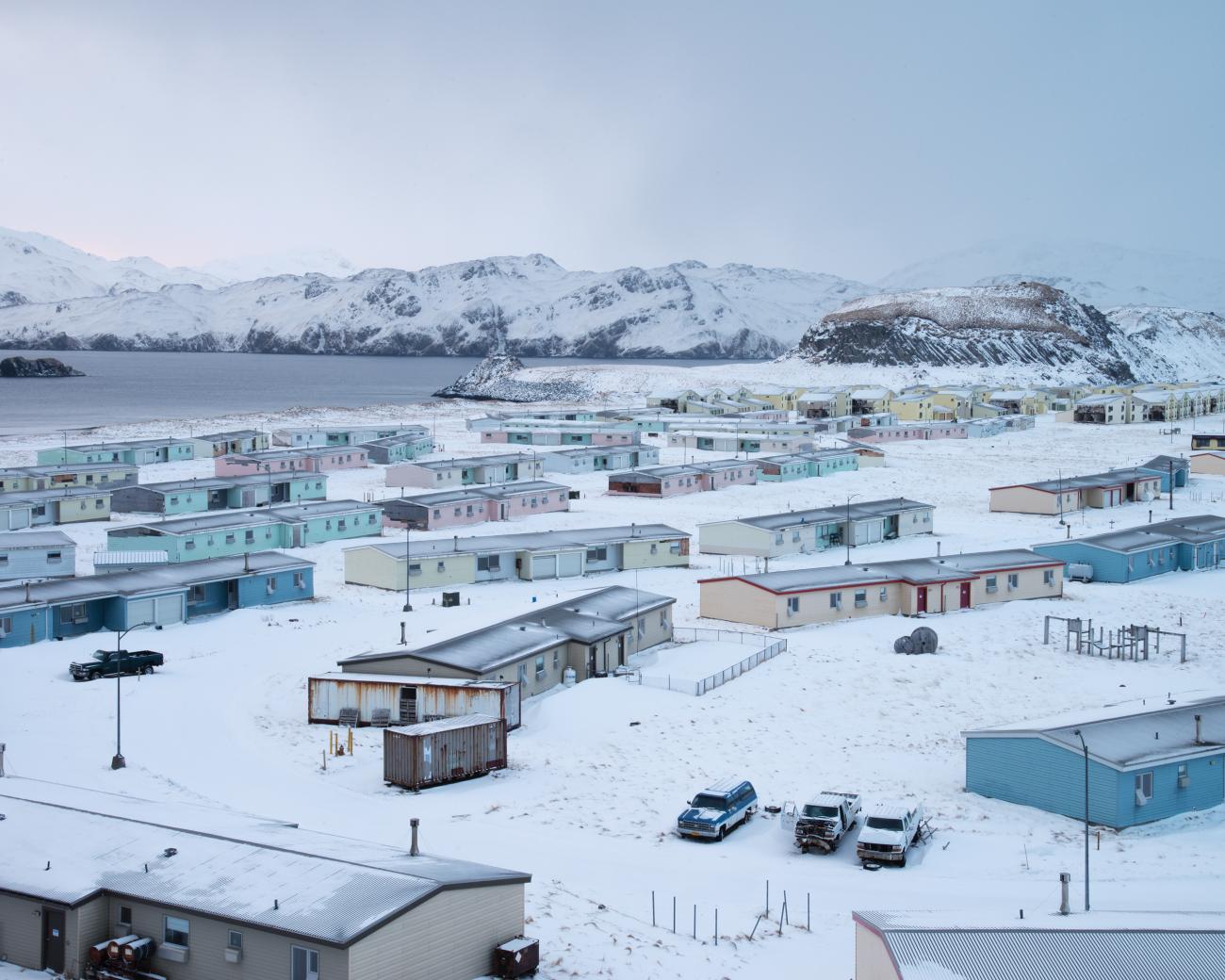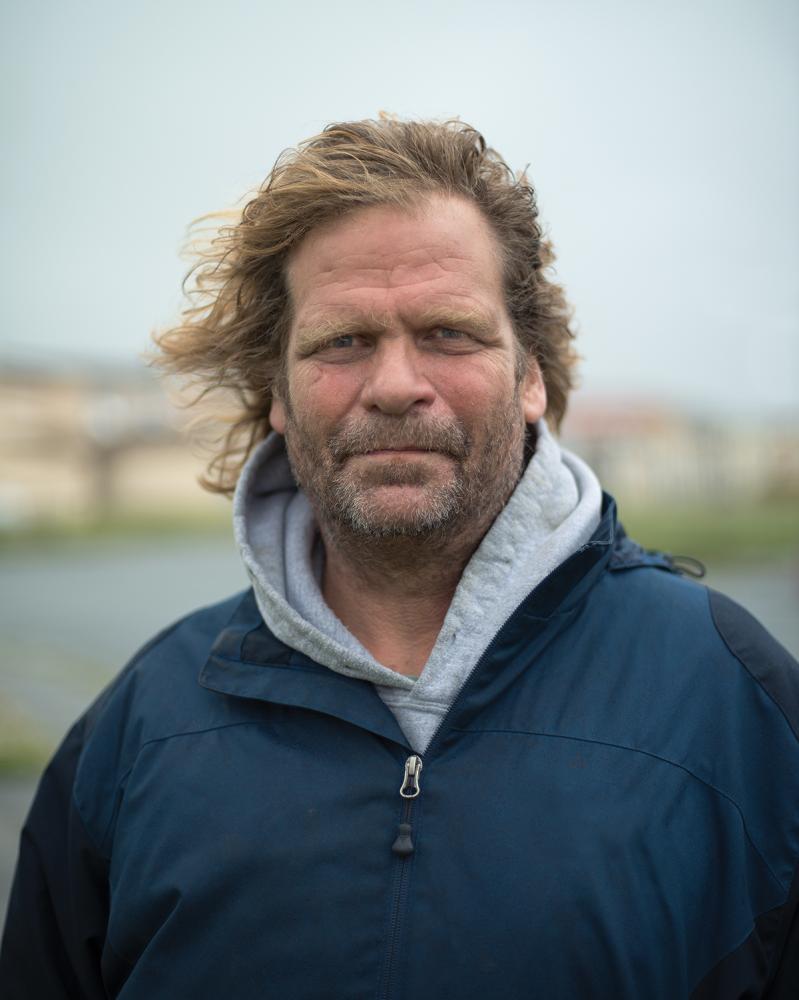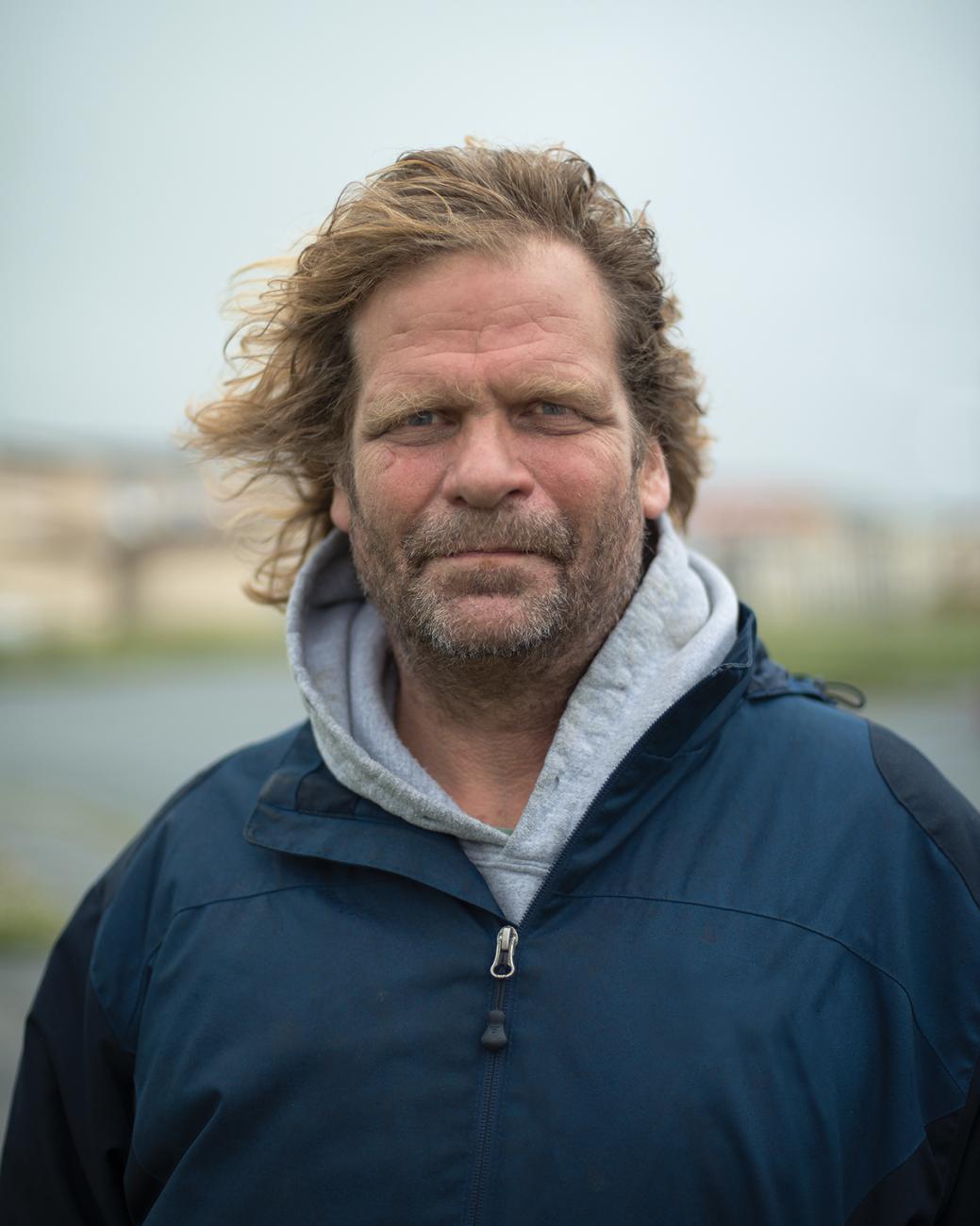Adak Island is way out there, so far at the end of the Aleutian archipelago in the Bering Sea that it shares a time zone with Hawaii instead of its own state. This is not a place for the fainthearted. Besides being earthquake prone and still recovering from a military hangover of unexploded ordnance, it is home to some of the most raging-maniac weather on the planet. Winds capable of sending dumpsters somersaulting down roadways like tumbleweeds can hit 120 miles per hour. Yet record strengths remain unknown since the winds once blasted the island’s anemometer off its tower.
Historically home to the Unangan people, known more commonly as Aleuts, this 270-square-mile volcanic island halfway between Seattle and Tokyo was developed as a strategic Army base during World War II, after the Japanese bombing of Dutch Harbor and the occupation of Attu and Kiska islands to the west. The compound later became a Cold War naval air and submarine surveillance station, which in its heyday was one of Alaska’s largest cities. Some 6,000 military personnel and their families lived there in colorful, cookie-cutter duplexes lined up neatly as if for inspection, with schools, restaurants, a hospital, a ski lodge, a movie theater, a bowling alley, a swimming pool, a roller rink, basketball, and squash and tennis courts. A McDonald’s, too.
The military abandoned it all in the late 1990s, turning roughly $3 billion in military assets over to the wind. Those who stayed hoped its deepwater port might attract cruise ships or that its barracks could be turned into a prison. Neither panned out. Although the 2010 census recorded a population of 326, only about 80 full-time residents remain, living among the ruins of a more prosperous time.
The stunning landscape, decaying infrastructure, and resilient people who are still hanging on inspired award-winning Alaskan photographer Ben Huff to choose Adak as a long-term photography project. Supported in part by the Alaska Humanities Forum, the project will become Huff’s second photography book.
Nothing about the commitment he’s made to this far-flung place has been easy, from getting there to making peace with its landscape, hauntingly beautiful on one hand, postapocalyptic on the other, the contradictions often superimposed upon each other.
Much of Adak’s infrastructure, now owned by the Aleut Corporation, is open, either unlocked or missing windows, walls, and roofs.
“If you’re living in a duplex and your washing machine dies, you walk down the street to a duplex that is uninhabited and you have a washing machine,” Huff said. “That goes for everything from flooring to screws to light fixtures. It’s incredibly expensive to get things there. You sort of do what you gotta do.
“People in Adak talk about how you could do a zombie movie there and not have to do anything but just show up with cameras and makeup. That makes it sound sort of lifeless, and I don’t see it that way. But it does feel sort of strange, like the last person on earth, walking into someone’s home.”
Adak was the logical next step after Huff’s last major undertaking, documenting one of the most lonely, exotic, and quirky stretches of road in North America. For that project he made countless trips up the Dalton Highway, known locally as the Haul Road, the 414-mile, mostly gravel lifeline between Livengood and the oil fields of Prudhoe Bay. Dodging potholes, snowdrifts, fatigue, and semitrucks in a hurry, he documented what he saw in The Last Road North, his first book, another Alaska Humanities Forum-backed project.
A former semipro bicycle racer with a fine arts degree, Huff was living in Fairbanks back then. Photo expeditions up the Haul Road amounted to loading his truck with provisions, pulling out of his driveway and heading north. Now living in Juneau, where he founded the independent art and photography publishing company Ice Fog Press, he’s making 3,400-mile roundtrip flights to Adak. One can occasionally find cheaper fares to Paris.
Among the elements driving him is a sense of urgency. Alaska Airlines, for instance, offers only two flights a week to Adak, a flight from Anchorage that takes three hours or more, depending on the weather. If those flights were to be discontinued, Adak would be done, Huff figures.
“It’s holding on by such a thread to really small economic resources,” he said. “It wouldn’t take an awful lot for the place to fold in on itself.
“It’s an industrious place for sure, with some good hard-working folk. But I don’t know what the future holds for them.”

